
Filter News
Area of Research
- (-) Biology and Environment (55)
- (-) Biology and Soft Matter (1)
- (-) Supercomputing (83)
- Advanced Manufacturing (24)
- Building Technologies (3)
- Computer Science (7)
- Electricity and Smart Grid (3)
- Energy Science (185)
- Energy Sciences (1)
- Functional Materials for Energy (1)
- Fusion and Fission (12)
- Fusion Energy (3)
- Isotope Development and Production (1)
- Isotopes (4)
- Materials (114)
- Materials Characterization (1)
- Materials for Computing (18)
- Materials Under Extremes (1)
- National Security (28)
- Neutron Science (39)
- Nuclear Science and Technology (12)
- Quantum information Science (9)
- Sensors and Controls (1)
- Transportation Systems (2)
News Topics
- (-) 3-D Printing/Advanced Manufacturing (13)
- (-) Cybersecurity (9)
- (-) Frontier (32)
- (-) Grid (7)
- (-) Materials Science (22)
- (-) Polymers (4)
- (-) Quantum Science (25)
- (-) Space Exploration (3)
- Advanced Reactors (2)
- Artificial Intelligence (41)
- Big Data (29)
- Bioenergy (50)
- Biology (76)
- Biomedical (28)
- Biotechnology (15)
- Buildings (6)
- Chemical Sciences (16)
- Clean Water (11)
- Composites (5)
- Computer Science (105)
- Coronavirus (22)
- Critical Materials (4)
- Energy Storage (11)
- Environment (106)
- Exascale Computing (28)
- Fusion (2)
- High-Performance Computing (56)
- Hydropower (8)
- Isotopes (3)
- Machine Learning (20)
- Materials (24)
- Mathematics (5)
- Mercury (7)
- Microscopy (16)
- Molten Salt (1)
- Nanotechnology (16)
- National Security (9)
- Neutron Science (16)
- Nuclear Energy (5)
- Partnerships (6)
- Physics (9)
- Quantum Computing (20)
- Security (6)
- Simulation (26)
- Software (1)
- Summit (47)
- Transportation (8)
Media Contacts

A team led by the U.S. Department of Energy’s Oak Ridge National Laboratory demonstrated the viability of a “quantum entanglement witness” capable of proving the presence of entanglement between magnetic particles, or spins, in a quantum material.
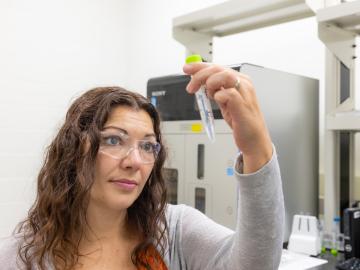
Carrie Eckert applies her skills as a synthetic biologist at ORNL to turn microorganisms into tiny factories that produce a variety of valuable fuels, chemicals and materials for the growing bioeconomy.

A team from ORNL, Stanford University and Purdue University developed and demonstrated a novel, fully functional quantum local area network, or QLAN, to enable real-time adjustments to information shared with geographically isolated systems at ORNL
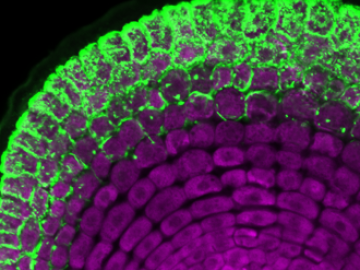
An ORNL team has successfully introduced a poplar gene into switchgrass, an important biofuel source, that allows switchgrass to interact with a beneficial fungus, ultimately boosting the grass’ growth and viability in changing environments.
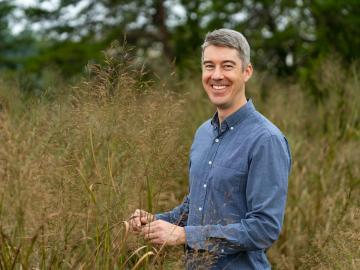
For ORNL environmental scientist and lover of the outdoors John Field, work in ecosystem modeling is a profession with tangible impacts.
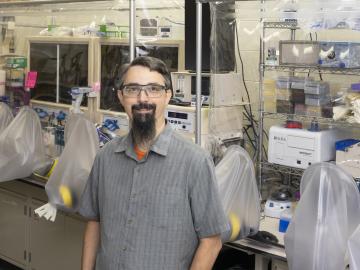
As a metabolic engineer at Oak Ridge National Laboratory, Adam Guss modifies microbes to perform the diverse processes needed to make sustainable biofuels and bioproducts.
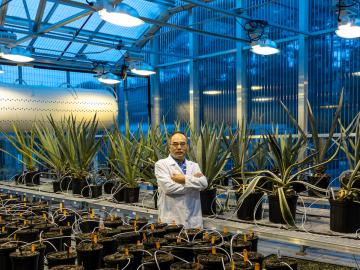
Scientists at ORNL have discovered a single gene that simultaneously boosts plant growth and tolerance for stresses such as drought and salt, all while tackling the root cause of climate change by enabling plants to pull more carbon dioxide from the atmosphere.

The Department of Energy’s Office of Science has selected five Oak Ridge National Laboratory scientists for Early Career Research Program awards.
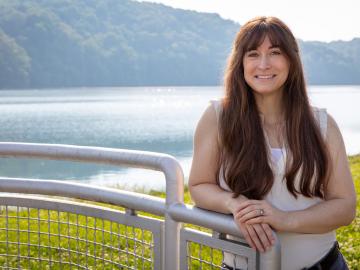
Carly Hansen, a water resources engineer at Oak Ridge National Laboratory, is rethinking what’s possible for hydropower in the United States.

At the Department of Energy’s Oak Ridge National Laboratory, scientists use artificial intelligence, or AI, to accelerate the discovery and development of materials for energy and information technologies.


